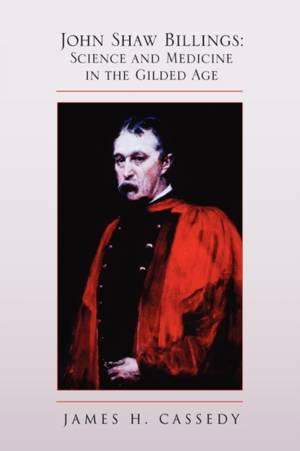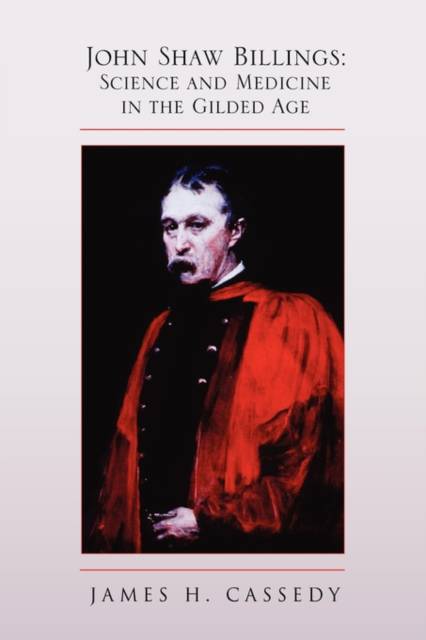
Door een staking bij bpost kan je online bestelling op dit moment iets langer onderweg zijn dan voorzien. Dringend iets nodig? Onze winkels ontvangen jou met open armen!
- Afhalen na 1 uur in een winkel met voorraad
- Gratis thuislevering in België vanaf € 30
- Ruim aanbod met 7 miljoen producten
Door een staking bij bpost kan je online bestelling op dit moment iets langer onderweg zijn dan voorzien. Dringend iets nodig? Onze winkels ontvangen jou met open armen!
- Afhalen na 1 uur in een winkel met voorraad
- Gratis thuislevering in België vanaf € 30
- Ruim aanbod met 7 miljoen producten
Zoeken
John Shaw Billings
Science and Medicine in the Gilded Age: Science and Medicine in the Gilded Age
James H Cassedy
Hardcover | Engels
€ 43,45
+ 86 punten
Uitvoering
Omschrijving
Much has been written about John Shaw Billings=s (1838-1913) role in the founding and development of two great American libraries, the Army Medical Library and the New York Public Library, to the neglect of other aspects of his career. Billings=s role as a physician was many-faceted. Beginning his medical career as an Army surgeon during the Civil War, during the next 30 years he added to his medical skills those of scientist, administrator, and planner, builder, and organizer of several important medical and public health activities and institutions. This book explores Billings as a leader of the Amedical revolution@ and the public health movement of the late 19th century. It emphasizes the part he played as a link between the growing federal government=s presence in health policy and scientific activity and the world of private medicine and local public health.
Specificaties
Betrokkenen
- Auteur(s):
- Uitgeverij:
Inhoud
- Aantal bladzijden:
- 254
- Taal:
- Engels
Eigenschappen
- Productcode (EAN):
- 9781441595188
- Verschijningsdatum:
- 23/02/2010
- Uitvoering:
- Hardcover
- Formaat:
- Genaaid
- Afmetingen:
- 152 mm x 229 mm
- Gewicht:
- 526 g

Alleen bij Standaard Boekhandel
+ 86 punten op je klantenkaart van Standaard Boekhandel
Beoordelingen
We publiceren alleen reviews die voldoen aan de voorwaarden voor reviews. Bekijk onze voorwaarden voor reviews.











